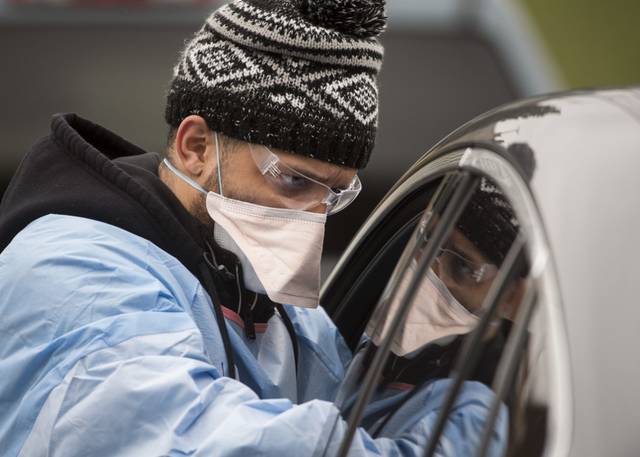10 ways to protect your skin while wearing a mask
During the covid-19 pandemic, many Americans are wearing face masks for extended periods of time for the first time in their lives.
This has brought about a number of skin issues, from flaring of eczema to worsening of acne.
Dr. Suzan Obagi, associate professor of dermatology at the UPMC Cosmetic Surgery & Skin Health Center, is offering advice to protect your skin while wearing a mask.
Dr. Obagi says her list of suggestions was prompted by her patients reaching out to her for advice.
“Some of them are in the health care field and are realizing that from wearing the masks a lot longer than they are used to, all of a sudden they are developing areas of skin that are breaking down, getting rough and raw, and they are having a lot of issues,” said Obagi. “There is a lack of information for what to do to treat that skin in a way that helps the skin heal but doesn’t interfere with the functioning of your mask.”
Here are her 10 tips to help protect your skin.
1. Wash your skin well and then apply a light moisturizer in the form of a lotion or, if your skin is very dry, use a cream. Try to avoid ointments as they may be too greasy for the skin. Also, ointments might adversely affect the seal of the mask if you wear certain tight-fitting masks.
2. Apply a light sunscreen lotion or cream, preferably a mineral-based sunscreen containing titanium dioxide or zinc oxide. Be aware that certain chemical sunscreen ingredients may wear down the integrity of rubber or elastic materials on the mask.
3. Make sure your mask covers your nose and mouth snugly but that it is not so tight that you are bruising your skin.
4. Avoid wearing makeup or foundation under your mask. This may cause your skin to break out.
5. If your glasses or goggles fog up while wearing a mask, use “paper-tape” or “micropore” tape to tape the mask across the bridge of your nose and onto the cheeks to prevent your breath from fogging up your eye protections. This type of tape is the least likely to pull or damage your skin when you remove the mask.
6. Once you remove your mask for the day, wash your skin again and apply a light moisturizing lotion. If you have eczema or dry, sensitive skin, you may want to apply a heavier moisturizer in the form of a cream.
7. Make sure to wash your hands with soap and water after removing your mask.
8. If you have areas on your skin that are raw or chaffed, apply an ointment to these areas after you are finished wearing your mask for the day and then reapply this ointment at bedtime. A few well-tolerated ointments are Aquaphor Healing Ointment, Vaseline Petroleum Jelly or Vaniply Ointment.
9. For those wearing cloth masks – make sure you launder them daily to keep in line with the CDC guidelines and to minimize bacteria growth on them, which then cause acne. Be careful and wash these masks in regular detergent with no bleach as the bleach may break down some materials.
10. If your ears hurt from the elastic bands, try to switch to a cloth mask (when in non-medical settings) that has a cloth ear loop rather than an elastic ear loop.
Obagi said that just as the coronavirus is not going away anytime soon, she anticipates that skin issues from prolonged wearing of masks during the pandemic will persist as well.
“I think until we have a vaccine or until this virus has demonstrated that it has mutated itself out of existence, we are going to be dealing with this at some level.”
Remove the ads from your TribLIVE reading experience but still support the journalists who create the content with TribLIVE Ad-Free.

